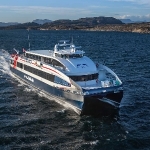The bill includes a provision directing $11 million to undertake the standards development work recommended in the report from a NIST/ACMA sponsored workshop addressing barriers to increased adoption of composites in infrastructure. During the workshop, attendees developed a preliminary roadmap with three proposed solutions to those barriers. If carried out, they could lead to the adoption of composites that are more reliable, durable and cost-effective than current infrastructure material options. The proposals included:
Improved Durability Testing: The development of a five-year program to establish reliable design tools based on new durability standards. The tools would be available to all stakeholders through an online data portal.
Design Data Clearinghouse: A way to gather, curate and disseminate design data to engineers.
Education and Training: The need to create a constant stream of education and training materials for universities and industrial schools that have composite training and certification programs.
The topic was the focus of a House hearing earlier this year, during which representatives from ACMA members Creative Pultrusions and West Virginia University testified that Congress should efforts to develop codes and standards that allow designers and engineers to build confidently with composite materials. During the hearing, Joannie Chin, deputy director of the engineering laboratory at NIST, mentioned that NIST’s Materials Genome Initiative (MGI) has helped the composites industry capture and share information about material properties.
Recently, MGI and research firm RTI International released a report that estimated that the development of a national “Materials Innovation Infrastructure” could present an economic benefit of between $123 billion and $270 billion per year. It reached that conclusion after gaining insight during in-depth interviews with more than 120 industry experts across a wide range of material competencies, including FRP composites. One of the problems, according to James Warren, the director of the Materials Genome Program at NIST, is that because polymer chemistry is inherently complicated, and the field of polymer composite research is much newer than research for traditional materials, failure rates in late R&D stages are considerably high and can be extremely costly.
“Key to preventing costly failures at this stage is to be able to predict them and then go forward with expensive physical testing only when computational models predict a high likelihood of success,” the report says. “For some materials classes, like metal alloys, good process models are available and commonly used. In others, like polymer composites or biomaterials, such models are less well developed.”
The report estimates that investment in improving the Materials Innovation Infrastructure has the potential to eliminate almost half of R&D project attrition and a 35 percent acceleration of R&D projects to market. Overall, those potential impacts lead to a 71 percent improvement in R&D efficiency, worth an estimated $39 billion to $69 billion per year to U.S. companies.













